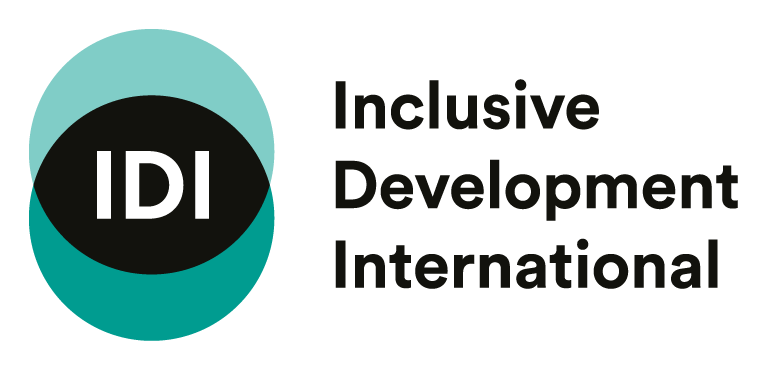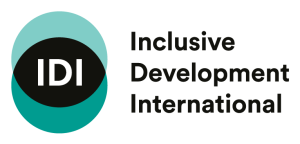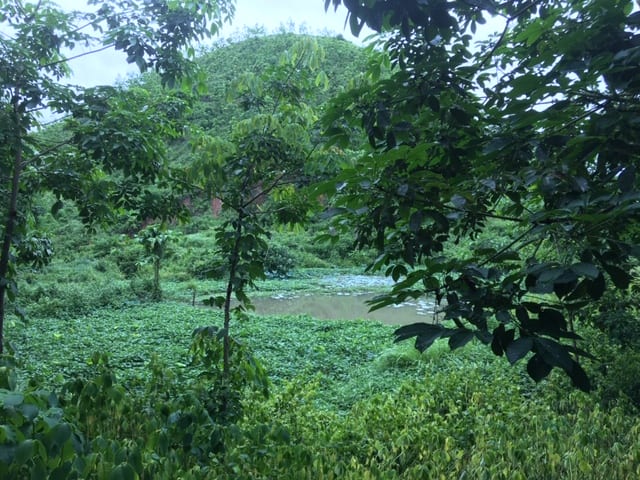(Banlung) – Twelve indigenous communities in Cambodia’s northeastern province of Ratanakiri scored a major victory today when the government announced it was returning to them 20 spirit mountains and dozens of other spiritually significant areas that had been grabbed by the Vietnamese agribusiness giant Hoang Anh Gia Lai (HAGL). The communities have been embroiled in a decade-long land conflict with HAGL since their ancestral lands were granted to the company to develop large-scale rubber plantations.
“Today’s decision represents an unprecedented recognition of indigenous land rights over business interests in Cambodia,” said Dam Chanty, Executive Director of Highlanders Association. “We commend the government for doing the right thing and putting people’s interests first.”
At a ceremony today convened by the provincial government, the governor of Ratanakiri officially requested that the Agriculture Ministry cut out 64 disputed areas, including spirit mountains, wetlands, traditional hunting areas and burial grounds “for the indigenous people to practice their beliefs, cultural traditions and to support their livelihoods.”
The government’s decision to return community land resulted from a dispute resolution process convened by the Compliance Advisor Ombudsman (CAO), the independent watchdog of the World Bank’s International Finance Corporation, after the communities filed a complaint with the mechanism in 2014.
While the communities praised the government’s decision, they also filed a new complaint with the CAO last week, citing new financial ties between IFC and the company. The communities lodged the second complaint because HAGL unilaterally pulled out of the CAO mediation process before reaching a final agreement with them on issues of land and water rehabilitation and compensation for damages. The communities are calling on HAGL to return to the negotiating table to resolve these issues.
“We are very happy for our ancestors that we are getting back our sacred lands,” said Sev Seun, a community representative from Kak village. “But our struggle will not end until the company restores the forests and streams that it destroyed and compensates our communities for all that we have suffered.”
The communities are being represented in the complaint by three Cambodian and indigenous people’s organizations – Equitable Cambodia, Highlanders Association and Indigenous Rights Active Members – and the global human rights organization Inclusive Development International.
“The IFC must finally be held accountable for the role it has played in the human rights and environmental disaster that has unfolded in Ratanakiri over the past decade,” said David Pred, Executive Director of Inclusive Development International. “This complaint is fundamentally about the IFC’s reckless investments in commercial banks and private equity funds that refuse to respect its environmental and social requirements, and its systematic failure to conduct oversight over what these institutions do with our public money.”
The 2014 complaint related to the IFC investment in Dragon Capital’s VEIL fund, which bankrolled HAGL’s agribusiness ventures in Cambodia and Laos. In 2016 and 2017, IFC bought equity stakes totaling $125 million in two other Vietnamese financial institutions, TP Bank and VP Bank. The banks then went on to provide financing of more than $200 million dollars to HAGL, specifically to fund its rubber plantations in Cambodia, despite the pending complaint with the CAO.
The new 117-page complaint provides extensive evidence of environmental and human rights violations resulting from HAGL’s wholesale clearance of intact forests, waterways, pastures, orchards, spirit forests, graveyards and other sacred areas belonging to indigenous communities in Ratanakiri. The communities are particularly concerned about the loss of reserved land for practicing shifting cultivation, their traditional form of agriculture, and declining soil fertility on their current farming land if they are unable to shift to other areas. These cumulative losses have seriously eroded the communities’ sovereignty over their land and system of food production and consumption, which is deeply interconnected with their identity and way of life.
“HAGL must respect its past commitments to the affected communities and resolve their outstanding grievances,” said Eang Vuthy, Executive Director of Equitable Cambodia. “The problem won’t end until HAGL repairs all the damage it caused, so we hope that IFC’s clients will encourage them to come back to the mediation table.”
The complaint is available here.
Background:
- The three HAGL concessions affecting the twelve villages initially spanned nearly 19,000 hectares and overlapped almost entirely with the ancestral lands and forests of the Jarai, Kachok, Kreung and Tampoun peoples. Following the 2014 complaint, HAGL agreed to stop clearing any further land, and a year later it agreed to return all lands not already planted or cleared. The three concessions were officially reduced in 2015 by more than sixty percent to 8371 hectares. The new decision marks a further reduction of 742 hectares.
- In 2015, HAGL agreed to return land that it had already developed which belonged to the communities. This paved the way for a joint land demarcation process to be undertaken by representatives of the twelve villages, their NGO advisors, HAGL, a provincial government working group and the CAO. At the conclusion of the demarcation process, HAGL agreed to return 20 spirit mountains and two burial grounds to the villages. However, the communities demanded the return of all 64 areas that were demarcated, including spirit mountains, burial grounds, chrops (wetlands) and chraps (hunting areas) that the company had already planted with rubber and fruit trees. For the areas that were not agreed between the parties, it was resolved that the government would make a final decision about what to do.
- In January 2019, following the first set of what was planned to be the final mediation meetings between communities and HAGL on outstanding issues, the company unilaterally withdrew from the mediations and told the communities to seek a resolution from the Cambodian government.
- The sudden withdrawal came following an overall restructuring of the company after the Vietnamese car manufacturer THACO bought a majority ownership stake in HAGL’s agricultural subsidiary. THACO makes cars for major brands including Kia, Hyundai, Mazda, and Peugeot.
For further information, see:
Comparison of landcover change within the HAGL concession boundaries: 2009-2015


